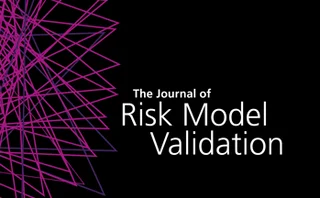Risk model validation
Analyzing credit risk model problems through natural language processing-based clustering and machine learning: insights from validation reports
The authors use clustering and machine learning techniques to analyze validation reports, providing insights to the development, implementation and maintenance of credit risk models.
US banks anticipate delay to Basel III implementation
New Fed supervision head expected to align schedule with EU and Japan, but time is tight
The importance of window size: a study on the required window size for optimal-quality market risk models
In this paper the authors study different moving-window lengths for value-at-risk evaluation, and also address subjectivity in choosing the window size by testing change point detection algorithms.
Empirical validation of the credit rating migration model for estimating the migration boundary
In this paper, a structural model for credit rating migration is developed and validated, by which the migration boundary is recovered for the first time.
Research on listed companies’ credit ratings, considering classification performance and interpretability
This study uses the correlation coefficient and F-test to select the initial features of a credit evaluation system, and then a validity index for a second selection to ensure that the feature system has the optimum ability to discriminate in determining…
Beyond the contract: client behavior from origination to default as the new set of the loss given default risk drivers
In this paper, we expand the modeling process by constructing a set of client-behavior-based predictors that can be used to construct more precise models, and we investigate the economic justifications empirically to examine their potential usage.
Bifractal receiver operating characteristic curves: a formula for generating receiver operating characteristic curves in credit-scoring contexts
This paper formulates a mathematical model for generating receiver operating characteristic (ROC) curves without underlying data.
A verification model to capture option risk and hedging based on a modified underlying beta
This paper analyzes the relationship between option risk and expected return from the perspective of the underlying beta, and estimates the degree of correlation.
A hybrid model for credit risk assessment: empirical validation by real-world credit data
This paper examines which hybridization strategy is more suitable for credit risk assessment in the dynamic financial world.
Determination of weights for an optimal credit rating model based on default and nondefault distance maximization
This study proposes a credit rating model that accurately identifies default and nondefault companies by maximizing intergroup credit score deviations and minimizing intragroup deviations.
How accurate is the accuracy ratio in credit risk model validation?
The author presents four methods to estimate the sample variance of the accuracy ratio and the area under the curve.
Statistical properties of the population stability index
This paper aims to fill a gap in the literature by providing statistical properties of the population stability index (PSI) and some recommendations on its use.
A FAVAR modeling approach to credit risk stress testing and its application to the Hong Kong banking industry
In this paper, a credit risk stress testing model based on the factor-augmented vector autoregressive (FAVAR) approach is proposed to project credit risk loss under stressed scenarios.
Benchmarking loss given default discount rates
This paper provides a theoretical and empirical analysis of alternative discount rate concepts for computing loss given default rates using historical bank workout data.
A k-means++-improved radial basis function neural network model for corporate financial crisis early warning: an empirical model validation for Chinese listed companies
This paper aims to simplify the early warning model for financial crises by collecting and analyzing the financial data of Chinese special treatment (ST) companies, normally listed companies and cancel special treatment (CST) companies.
The use of range-based volatility estimators in testing for Granger causality in risk on international capital markets
This study utilizes the extreme value theory (EVT) approach to compare the performance of a wide variety of range-based volatility estimators in the analysis of causality in risk between emerging and developed markets.
Old-fashioned parametric models are still the best: a comparison of value-at-risk approaches in several volatility states
The authors present backtesting results for 1% and 2.5% VaR of six indexes from emerging and developed countries using several of the best-known VaR models, including generalized autoregressive conditional heteroscedasticity (GARCH), extreme value theory…
An alternative statistical framework for credit default prediction
This study compares the gradient-boosting model with four other well-known classifiers, namely, a classification and regression tree (CART), logistic regression (LR), multivariate adaptive regression splines (MARS) and a random forest (RF).
Risk-neutral densities: advanced methods of estimating nonnormal options underlying asset prices and returns
This work expands the analysis in Cooper (1999) and Santos and Guerra (2014), and the performance of the nonstructural models in estimating the "true" RNDs was measured through a process that generates "true" RNDs that are closer to reality, due to the…
An empirical evaluation of large dynamic covariance models in portfolio value-at-risk estimation
This research develops a framework adopting conditional covariance modeling combined with various de-noising methods to estimate the portfolio VaR and proves the importance of DCC over the sample rolling method widely used in the industry.
International Financial Reporting Standard 9 expected credit loss estimation: advanced models for estimating portfolio loss and weighting scenario losses
In this paper, the authors propose a model to estimate the expected portfolio losses brought about by recession risk and a quantitative approach to determine the scenario weights. The model and approach are validated by an empirical example, where they…




